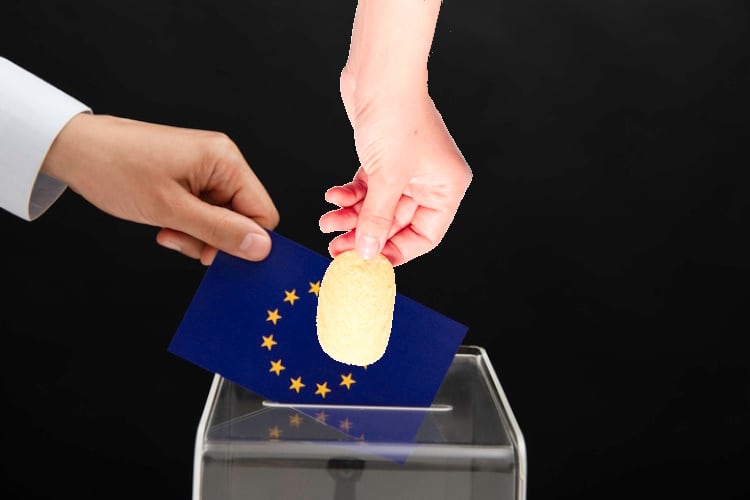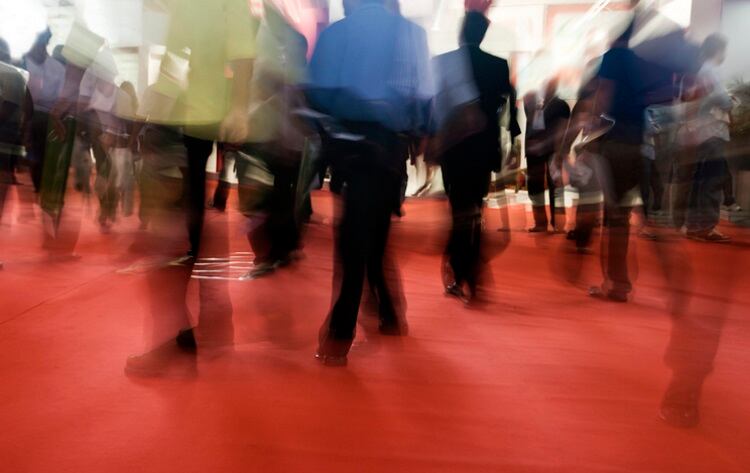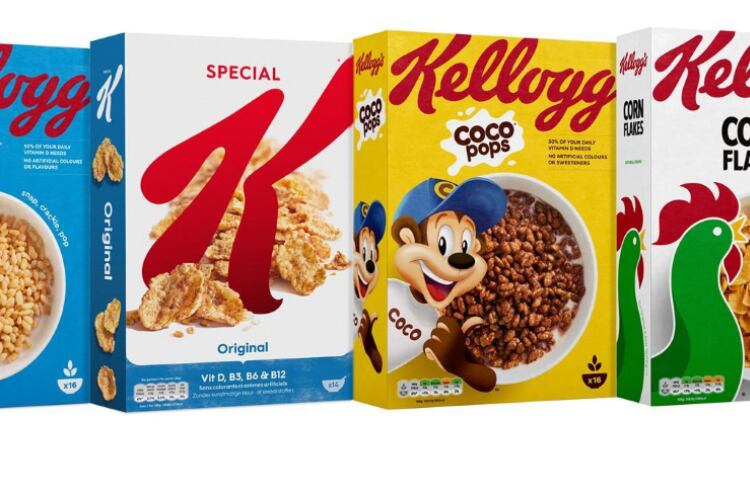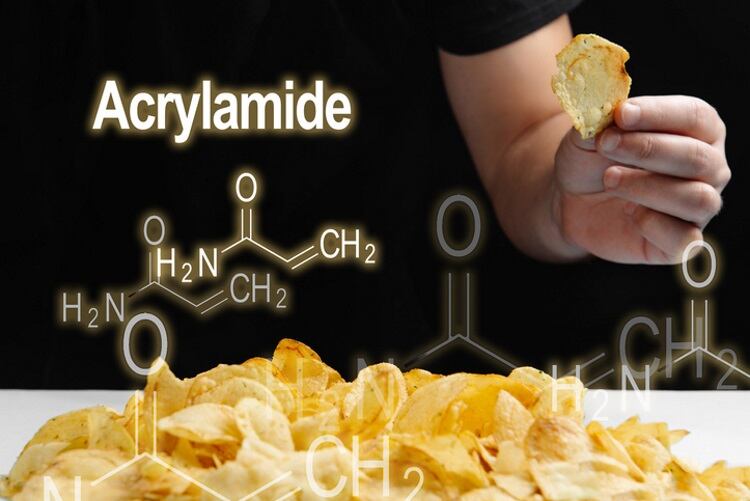In June this year, Sandy Iagallo - who is also senior director, Regulatory & Wellbeing Europe for Kellanova (Kellogg Europe) - took over the reins from Mathijs Peters (formerly responsible for EU Corporate Affairs at PepsiCo).
She brings to the table a vast portfolio of industry experience and leadership skills. Before joining Kellogg in 2020, Iagallo held several senior roles in marketing, sales, finance and public policy for leading international companies in the food and pharmaceutical sector.
During her two-year mandate at the helm (2023-2025), she intends to further consolidate the position of the sector as a trustworthy partner for policymakers, especially pertinent as the elections scheduled for June 2024 will bring in a new European Parliament and Commission.

You were appointed president of the European Snacks Association in June. What is your vision in this role?
As the new president, the remit and responsibilities are to attend board meetings and work hand-in-hand with the DG. So, Sebastian and I are a tight team and reflect on the future priorities, opportunities and challenges that members and the wider team face and need to have a view on.
It’s important for me as president to ensure the resources are well spent on balancing those priorities and opportunities and that the association is steering the snacks category within Europe.
What was your journey to ESA?
I am senior director of Regulatory and Wellbeing - also known across the industry as the nutrition side of the business - for Kellanova (formerly known as Kellogg’s).
I’m fairly new to Kellanova, having only been here 3½ years. The company has always been a very strong member of ESA, invested in and worked closely with the trade association to have a share of voice from an industry perspective. We have the opportunity to work with the trade associations to get that voice across to consumers and to policymakers.
As a company, we’ve been on quite a journey, as you know. We’ve been under pressure when it comes to formulation, to ensure we strike that right balance of nutritious foods, which also includes snacks. We’re always making concerted efforts to ensure we’re investing to advance the snacks category in totality.
ESA recently published the second Monitoring Report to the EU Code of Conduct for Responsible Food Business and Marketing Practices. What does this contain?
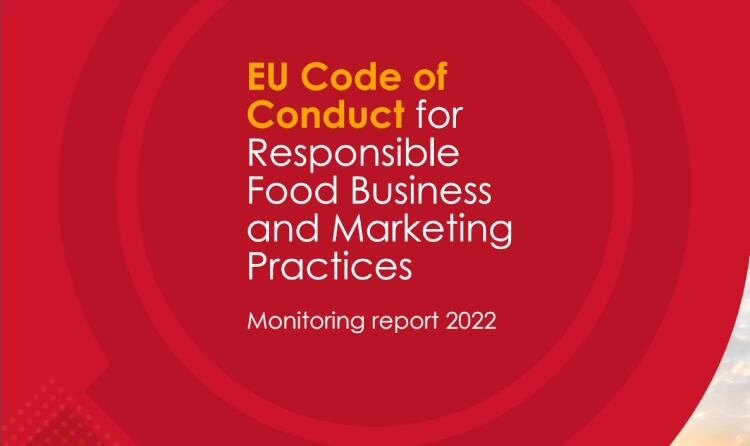
ESA collaborated with FoodDrinkEurope and its wider members to elaborate on that Code of Conduct, which demonstrates the interests and also the commitments of the sector around responsible practises around marketing.
ESA was one of the first signatories when the Code was launched more than two years ago. The Monitoring Report is an overview of how the association is promoting the Code to its members and includes some examples from members demonstrating how the sector is ‘walking the talk’ and meeting the objectives.
ESA also recently released the Sustainability Report 2022-2023. What should producers be aware of?
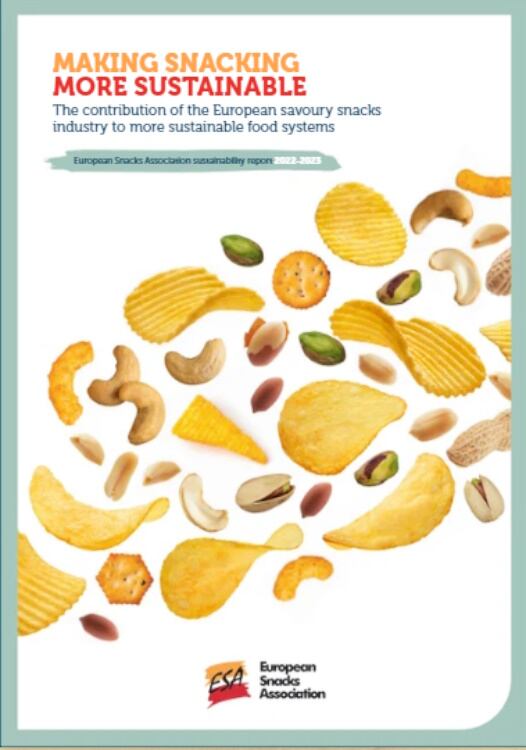
There’s a growing interest in this area as it makes good business sense from a responsibility perspective and long term competitiveness.
The snacking sector itself is really committed and determined to do its part to move towards a sustainable food system and building on the achievements of recent years.
And this has, of course, been a journey.
The Sustainability Report gives a comprehensive view of the actions taken by the sector - literally from farm to packet - and is also there to serve as an inspiration to identify best practises and implement even more ambitious actions.
The Report centres around three different pillars, namely biodiversity, sustainable sourcing and healthy diet.
As a sector, we’re striving to do better on environmental sustainability and our members support and promote the use of those sustainable practises from suppliers to ensure that we’re preserving natural resources.
The second pillar is around production and distribution, and ESA members really optimise the use of resources in the supply chain from end to end and whenever possible. They support the integration of the principles of that circular economy.
The third key pillar is around healthy and sustainable diets and, again, members are committed to responding to consumer demands for healthier and more sustainable snacks.
Is reformulation a growing priority for savoury snacks producers in Europe?
The savoury snacks producers are really trying to balance consumer demand for great tasting and good value for money treats, but on top of those elements, producers are also trying to do improve the nutritional density and content and in doing so by using the highest quality ingredients. European snack manufacturers continually invest millions of Euros and pounds into the development of new products, ingredients and different manufacturing processes and methods. And the sector has a really good track record of successful reformulation efforts.
I think it’s important to note that savoury snack products contribute very little to European’s salt and fat intake - actually only about 2%. And even though that is a small contribution to the overall dietary intake, members are constantly trying to strike that balance of lowering levels of salt, saturated and total fats while bringing great taste, great flavours.
What is the current state of the savoury snacks industry in Europe?
I guess the best word that sums it up - probably over the past 18-24 months - is resilience.
Volume sales have fallen across Europe between 2021 and 2022 for a couple of reasons. We know there’s been rising production costs due to the energy crisis. We’ve had labour shortages and increasing prices of raw materials across the entire supply chain and that's really impacted price increases, which, in turn, has affected the purchasing power of consumers and resulted in falling volume sales.
However, we do feel the future looks bright.
I think the sector can be optimistic about supply chain problems; inflation seems to be tapering off; and we see the European market poised for a promising growth trajectory in the next couple of years. Based on recent data from Euromonitor, the annual growth rate is expected to be 2.5% to 3% until 2025; with predicted retails retail sales of about €44bn in 2023.
We’re witnessing a surge in demand for healthier and more sustainable options: The trend of snacking with purpose is gaining momentum. Consumers are seeking out snacks that not only satisfy their cravings but also align and balance with their health and wellness objectives. The better-for-you options - such nuts and seeds, trail mixes and vegetables and pulses (plant-based) - are really outperforming and show the most dynamic growth.
Of course, potato crisps is a big savoury snack category in Europe for a number of reasons. They’re relatively affordable, well known, convenient, can deliver novel tastes and the potato crisp sector can quickly respond to evolving consumer demands.
There’s a lot of opportunity for innovation and growth in the future.
Does this differ from the global market?
I think savoury snacks was probably one of the most affected categories by the global supply chain crisis in 2022, but it is also, as I mentioned, one that is the most resilient.
What we call the ‘snackfication trend’ is continuing to play a vital role around the globe. Savoury snacks are seen as affordable; consumer desire for pleasurable and permissible treats is stronger than ever; and consumers are demanding convenient, nutritious foods to keep them going throughout the day. Snacking on the go, too, is becoming more frequent and more prevalent today than in previous years.
So, similar pressures from both a European and a wider perspective, but also opportunities for the snacks category.
ESA is gearing up for SNACKEX 2024. Can you tell me more about it?
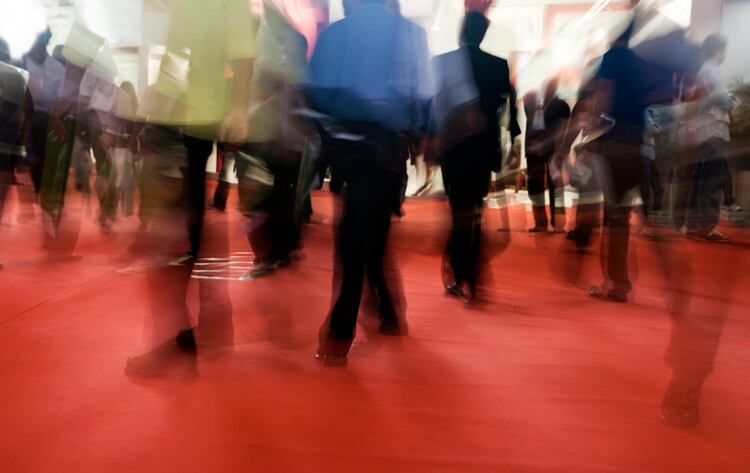
Why Stockholm? The Nordic countries are pioneers in everything related to sustainability and what’s better-for-you - wellbeing, the origin of new tech, processing methods and choices of raw materials - and it sets a nice tone of how snacks are made throughout Europe. They’re also seen as leaders of best practises.
Stockholm is also an easy to reach destination - located in the heart of the region with lots of daily flights from all over the world - and a modern, green city with great shops and pubs.
Who should attend?
SNACKEX is a great opportunity for anyone who wants access to the international savoury snack industry. Everyone involved in the business will benefit from the array of suppliers and makers exhibiting at the show; as well as those looking to find new solutions and machinery; and engineers with equipment needs.
Retailers looking for new products should attend; and a great opportunity for anyone in R&D.
So, anyone in the industry who’s looking for those unique, cutting-edge opportunities should attend SNACKEX 2024.
Is there anything different planned for this event from other years?
SNACKEX has a 50+-year history and a biannual trade event that’s not by random. It’s by choice that every edition is a little bit different. We move the event around Europe, which each time creates a new landscape and opportunities, attracting different exhibitors and attendees from different parts of the map.
A sneak peek into next year’s show is the launch of a new forum called the Snack Science Hub. This is actually a revamped and enhanced version of what used to be known as the Knowledge Centre and will be used to debate short, condensed sessions about the essentials of current snack making challenges, trends and so on.
So, a snappy way to attend these sessions and we expect them to do very well and be attended by both newcomers to the industry, as well as experienced attendees looking for an update on where things stand today.
Is there still time for companies to secure a spot to showcase their products/services/etc?
The show floor is about 75% sold, so there are some stands still available, so we encourage companies to come forward at their earliest to secure their spot.
The EU elections next year will usher in a new EU Parliament and a new Commission. What are the priorities for ESA for the new political cycle?
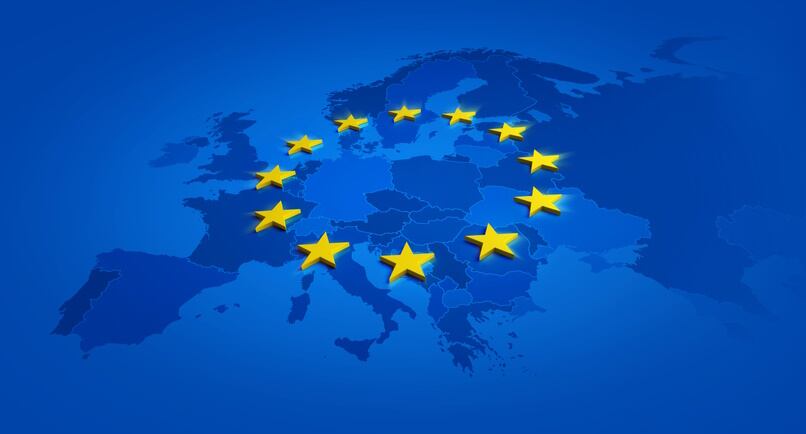
The EU elections in June next year is an important milestone because a new political landscape will emerge and priorities will be redefined. ESA feels it opens an area where everything will be possible.
The current polls are showing that right wing and Eurosceptic parties are set to surge in the next election, at the expense of the centrist parties. Whereas the Greens enjoyed probably their best results in 2019, they are expected to lose about a third of their seats, so the next European Parliament could be less inclined to support those green policies and be more supportive of business-friendly ones.
This could go hand in hand with more national or protectionist-type policies at the detriment of stronger EU harmonised approaches of a single market, which is the most beneficial to business operators. There’s still a lot of questions over the future of the EU Green Deal and, to some extent, the Farm 2 Fork strategy, which has been a driver in the food industry and in particular, the snacks industry. But we do feel there are several initiatives that are potentially going to impact our sector that have not been presented to date, for instance, as an EU framework for sustainable food systems.
But at the same time, some are still being negotiated between the co-legislators: an example is packaging and packaging waste regulations on the directive of the Green claim. So, I would say it’s still in a state of block … but we feel the newcomers in the European Parliament and of course, the new Commission, will offer a good opportunity to present the sector, educate policymakers on our industry’s challenges and we’re very much looking forward to the next political cycle and what opportunities that actually holds for the snacking sector.
What is your takeaway message for both current members and perspective members of ESA?
ESA is a solid trade association that strives to give its members a share of voice. It’s a very proactive organisation that remains true to the principles of nutrition and health, and sustainability and food safety.
We’re working on behalf of the members - and from the best position the sector - to face the upcoming opportunities and challenges that are going to emerge as we move to a new European Parliament and Commission. I’ve worked with several associations, and ESA has a strong reputation with policymakers. It’s well respected, constructive and that approach is going to continue. They understand policy and are here to provide balanced views, while engaging in conversation with stakeholders.
What I also really like is they’re technically experts and are happy to share their experience across the industry.
A pivotal role
ESA’s director general Sebastian Emig looks forward to a fruitful collaboration with Iagallo.
“With her extensive knowledge of the European regulatory landscape and her commitment to enhancing consumer wellbeing, Sandy is very well-suited to steer the ESA towards its mission of ensuring the highest standards of quality, safety and sustainability in the snacks industry,” he said.
“Her vision and expertise will play a pivotal role in driving the association’s strategic initiatives, strengthening partnerships and advocating for favourable policies and regulations that foster growth and sustainability.”
He added, “I would also like to thank Mathijs Peters for his invaluable contribution as president in the past years. He has been a real driving force in the organisation, relentlessly promoting the interest of savoury snacks manufacturers. We wish him the best for his future endeavours.”
Founded in 1961, the European Snacks Association asbl (ESA) is Europe’s only trade organisation dedicated to advancing the savoury snacks industry on behalf of member snack manufacturers and suppliers, as well as national trade organisations.
ESA’s membership is made up of over 200 companies of all sizes in 40 countries - representing 80% of the entire European snacks market - comprising a broad international membership of manufacturers and companies supplying equipment, ingredients and services to the industry. In addition, membership is open to other trade associations with relevant interests in the savoury snacks industry.


